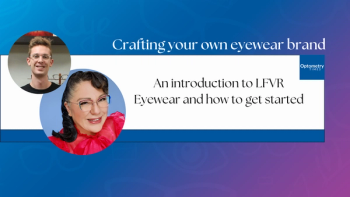
Cannabis users have increased risk for thyroid eye disease outcomes, study reports
The authors concluded that patients with autoimmune hyperthyroidism who used cannabis had a significantly increased risk for TED outcomes in the 1-year interval.
Amanda Zong, BS, and Anne Barmettler, MD, from the Department of Ophthalmology and Visual Sciences, Montefiore Medical Center, Albert Einstein College of Medicine, Bronx, NY, reported that cannabis users had a significantly increased risk for thyroid eye disease (TED) outcomes.1 They published their study in Ophthalmic Plastic and Reconstructive Surgery.
They conducted this study to identify an association between TED and cannabis use in patients who were diagnosed with autoimmune hyperthyroidism. The investigators pointed out that while the association between cigarette smoking and TED has been well established, an association between TED and cannabis use has not been determined.
Study design and results
The researchers conducted a cohort study that included patient data in TriNetX, an electronic health record platform, for patients with autoimmune hyperthyroidism over a 20-year period.
The primary study outcomes were TED presentation, ie, exophthalmos, eyelid retraction, eyelid edema, orbital edema, strabismus, and optic neuropathy, and treatments (teprotumumab, Tepezza, Horizon Therapeutics), methylprednisolone, tarsorrhaphy, and orbital decompression, among patients who used cannabis, those who smoked cigarettes, and control patients.
The relative risks among the cohorts were calculated for each outcome in 6-month and 1- and 2-year intervals after autoimmune hyperthyroidism was diagnosed.
The investigators identified 36,186 patients with autoimmune hyperthyroidism, of whom 783 used cannabis, 17,310 used nicotine, and 18,093 were control patients who used neither substance.
“Compared with control patients, cannabis users were more likely to be younger, male, Black/African American, and have anxiety or depression. After propensity matching, cannabis users were 1.9 times more likely to develop exophthalmos (p = 0.03) and 1.6 times more likely to develop any TED presentation (p = 0.049) during the 1-year interval. The differences were not significant in the 2-year interval,” Zong and Barmettler reported.
The authors concluded that patients with autoimmune hyperthyroidism who used cannabis had a significantly increased risk for TED outcomes in the 1-year interval. They advised that further research is needed regarding management of TED.
Reference:
Zong AM, Barmettler A. Effect of cannabis usage on thyroid eye disease. Ophthal Plast Reconstr Surg 2025;41:179-185. doi:10.1097/IOP.0000000000002770
Newsletter
Want more insights like this? Subscribe to Optometry Times and get clinical pearls and practice tips delivered straight to your inbox.

















































.png)


